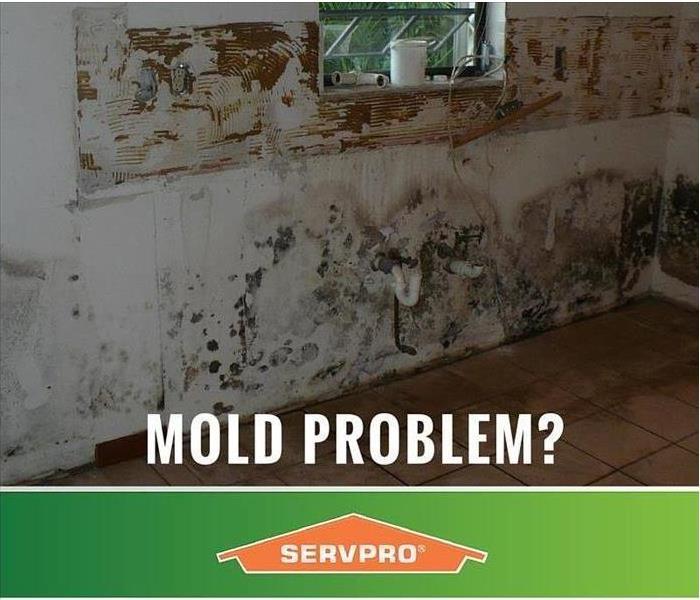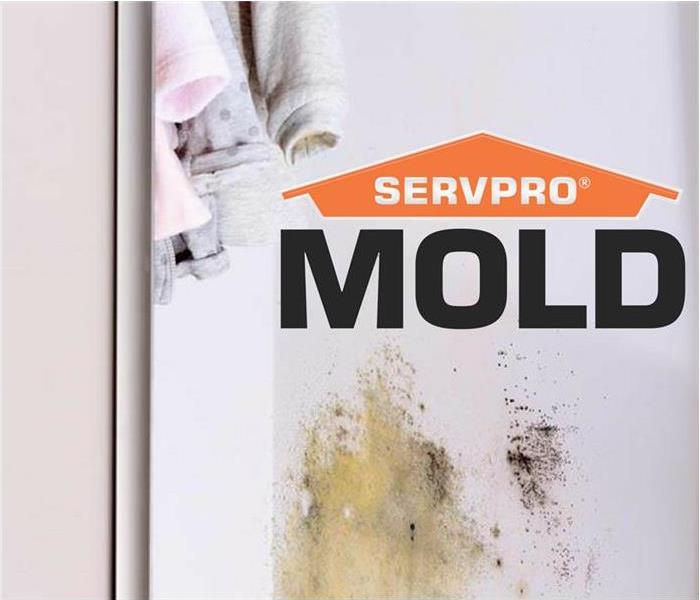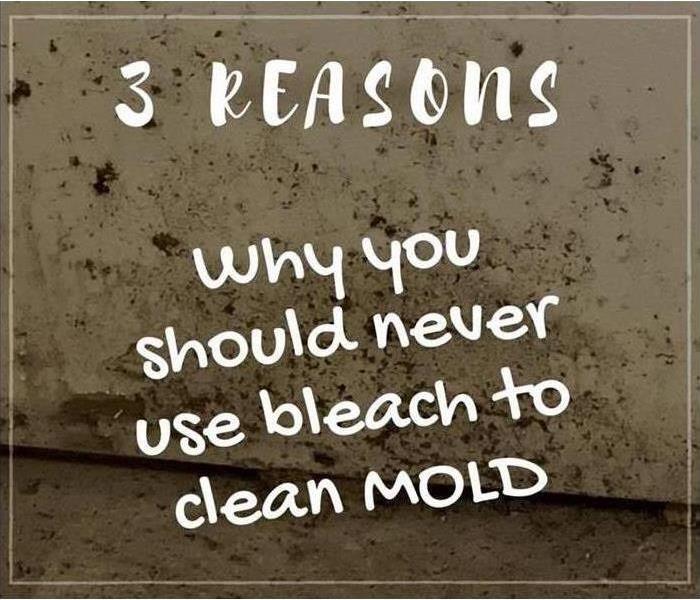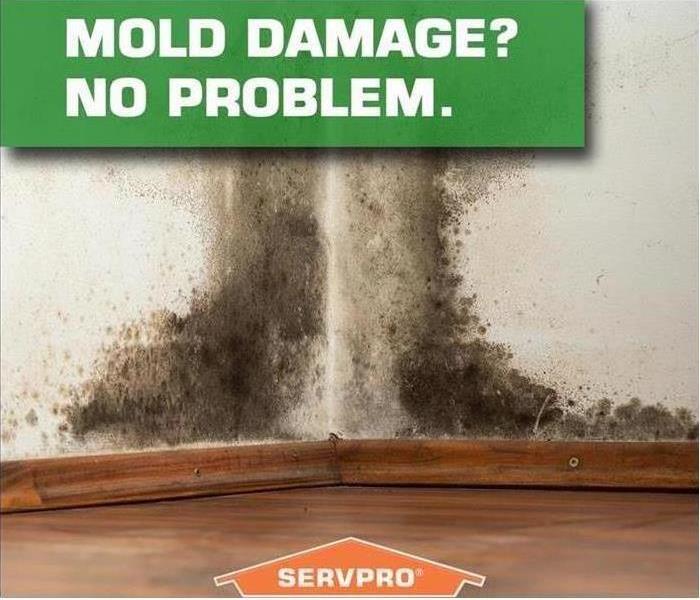Recent Mold Remediation Posts
Mold Damage Cleanup and Remediation in Harrisonburg
5/7/2024 (Permalink)
 The smallest amount of condensation can cause large mold issues. Call SERVPRO of Harrisonburg for mold remediation.
The smallest amount of condensation can cause large mold issues. Call SERVPRO of Harrisonburg for mold remediation.
Assessment of the Source of Mold Damage, Inspection, and Cleanup in Harrisonburg
Harrisonburg offers one-of-a-kind museums, beautiful architecture, locally crafted beverages, and a wide variety of attractions. The 40-block downtown district can be explored on foot, by bike, on a scooter, or by car, and is a winner of the “Great American Main Street Award.”
Mold damage occurs in Harrisonburg homes and business buildings anytime there is a combination of moisture, organic material, and temperate temperatures. Many of our customers are unaware they have mold in their buildings until they notice the telltale strong, musty odor in one room or throughout the entire building. Leaking foundations or cracks in plumbing joints behind walls provide the perfect conditions for mold spores to form a colony and damage structures and contents such as carpets and drywall.
We urge our clients to call SERVPRO® as soon as they notice a musty odor. We can be onsite within four hours of your call to our office. We immediately inspect and identify the source of the mold infestation and the damage. Our mold removal experts develop a plan to contain the exposure and remove contaminated materials. The source of the moisture is also identified and repaired to avoid future infestations.
Large infestations require detailed steps to contain the infestation, remove mold-contaminated materials, and perform repairs and restoration. More minor infestations may not require all of the identified steps:
- Establish physical and negative air chambers to contain mold spores
- Utilize air filtration to scrub microscopic mold spores from the air
- Contaminated contents are bagged in place and removed
- Antifungal and antimicrobial agents are used to treat and eliminate mold colonies
- All contents, including walls, furniture, curtains, and clothing, are cleaned
- Repair and restoration of walls, flooring, cupboards, and contents are completed
We aim to return homes and business buildings to our clients “Like it never even happened.”
Call for help with mold damage cleanup, restoration, and repairs at SERVPRO of Rockingham and Augusta Counties and nearby areas. Call (540) 433-6100.
Mold Can Spread Through A Home In As Little As 48 hours
1/3/2019 (Permalink)
Microscopic mold spores naturally occur almost everywhere, both outdoors and indoors. This makes it impossible to remove all mold from a home or business. Therefore, mold remediation reduces the mold spore count back to its natural or baseline level. Some restoration businesses advertise “mold removal” and even guarantee to remove all mold, which is a fallacy. Consider the following mold facts:
- Mold is present almost everywhere, indoors and outdoors.
- Mold spores are microscopic and float along in the air and may enter your home through windows, doors, or AC/heating systems or even hitch a ride indoors on your clothing or a pet.
- Mold spores thrive on moist Mold spores can quickly grow into colonies when exposed to water. These colonies may produce allergens and irritants.
- Before mold remediation can begin, any sources of water or moisture must be addressed. Otherwise, the mold may return.
- Mold often produces a strong, musty odor and can lead you to possible mold problem areas.
- Even higher-than-normal indoor humidity can support mold growth. Keep indoor humidity below 45 percent.
If your home or business has a mold problem, we can inspect and assess your property and use our specialized training, equipment, and expertise to remediate your mold infestation.
If you see any signs of mold call SERVPRO of Harrisonburg/Rockingham County today at 540-433-6100.
Why you should never use bleach to clean mold
11/27/2018 (Permalink)
Chlorine Bleach is often regarded as the answer to stopping mold growth and removing the mold. However, this is a myth. Bleach does not exonerate mold. Here are three reasons why bleach is not the answer to mold, and should never be used to clean a mold-contaminated area.
1. Bleach Loses Effectiveness Over Time
Chlorine bleach can dissipate rapidly, causing the bleach to be less effective. Over time this occurs because chlorine can evaporate and even faster in areas that are above room temperature. When the chlorine disappears, the bleach bottle turns into a bottle of salt water.
2. Bleach can actually contribute to mold growth
Chlorine bleach was made to clean surfaces, therefore can only kill surface bacteria and mold. This is due to bleach’s ion structure, which prevents the chlorine from penetrating porous material such as wood and drywall. When mold grows in porous areas, the enzyme’s roots grow deep within the material, rendering the bleach ineffective of exterminating the mold. The bleach can only remove the green stain from the mold, allowing the surface to appear clean. But underneath the surface, the water component of the bleach penetrates and helps the internal roots to continue to grow, causing mold to reappear.
3. Bleach is Toxic
Bleach emits harmful fumes that pollute the air we breathe and can become harmful to humans and even pets. Over a period of time, inhaling the gases bleach emits can deteriorate the lungs and esophagus lining in addition to the scarring of the respiratory tract, which occurs in earlier stages. Also, research shows that household bleach is one of the leading causes of accidental poisonings in the United States.
Two reasons you can get mold in your home is… heat and humidity. Mold thrives in dark, moist areas, and humidity only helps that process. That’s why if you experience water damage and don’t take care of it the right way and in the first 48 hours; mold will begin to grow.
Containment During a Mold Remediation: How Important is It?
9/27/2018 (Permalink)
 Where is the most strategic location of this containment? It should be placed as close to the source of invasion as possible.
Where is the most strategic location of this containment? It should be placed as close to the source of invasion as possible.
This information was taken fromRestoration and Remediation, an online magazine. It is beneficial to share information with you regarding mold and why we use containment in the remediation process.
"The great mold warriors we meet and work with on a daily basis all have a common advantage- like the greatest generals in history, they know their enemy. More specifically these mold warriors know and understand that the greatest strength of their enemy is its invisibility.
Begin your battle by heeding the current Nobel Laureate for literature: "The answer my friend, is blowing in the wind, the answer is blowing in the wind." [Of course that was an anti-war song…but let's not get too hung up in details…]
Since we know our enemy, we know it's greatest weakness - it cannot move on its own accord. It is entirely dependent on air currents to power its invasion. Manage the skies, and you will win the war.
Erecting containment and generating and directing the air flow within that containment will enable us to win the air war, by controlling the enemy's movement.
Where is the most strategic location of this containment? It should be placed as close to the source of invasion as possible while still permitting us to gain access and accomplish our work.
One of the most common flaws in mold remediation projects is a containment structure that is larger than it needs to be: Larger containments require more equipment for managing airflow, have more possible leak points, and require more time and effort to decontaminate prior to de-mobilisation. While erecting a containment, one must carefully balance the trade-offs between size and work access.
To do so, one can rely on the knowledge of experienced mold warriors and follow the established principles."
SERVPRO of Harrisonburg/Rockingham County can be your warrior when it comes to mold. To learn more, please visit our website or call us at (540) 433-6100. We will help guide you through this process.
All Molds Are The Same, Right?
9/19/2018 (Permalink)
If you find mold in your house, you may not know exactly what type it is. There are various different types of mold that are commonly found in houses. Some molds are worse than others and are more toxic than others so knowing the difference is critical.
- Acremonium: Toxigenic mold that evolves in appearance, from a small moist mold in to a fine powdery mold. It normally grows in humidifiers, drain pans, window sealants and cooling coils.
- Alternaria: The most common form of allergenic mold in the whole world. It resembles the texture of velvet and has brown or deep green hairs. This mold tends to grow where there is dampness so typically in bathrooms and below leaking sinks. This is the type of mold most people see in their house after dealing with water damage.
- Aspergillus: It can vary in color and is a very common household mold. The long flask-shaped pores can form thick layers of mold. It is an allergenic mold but can become more toxic depending on the environment and species of the mold.
- Stachybotrys: Commonly known as “black mold”. This mold thrives in wet, dark areas that have high humidity levels. It is dark greenish or black in color with a slimy texture.
These are just a few types of the more common mold types one could find in the house. If you find mold in your home the best thing is to call a professional service, such as SERVPRO of Harrisonburg/Rockingham County, in order to have it taken care of quickly and safely.
Content by: https://aerindustries.com/blog/2017/03/28/common-types-mold-in-home/
 The smallest amount of condensation can cause large mold issues. Call SERVPRO of Harrisonburg for mold remediation.
The smallest amount of condensation can cause large mold issues. Call SERVPRO of Harrisonburg for mold remediation.





 24/7 Emergency Service
24/7 Emergency Service



